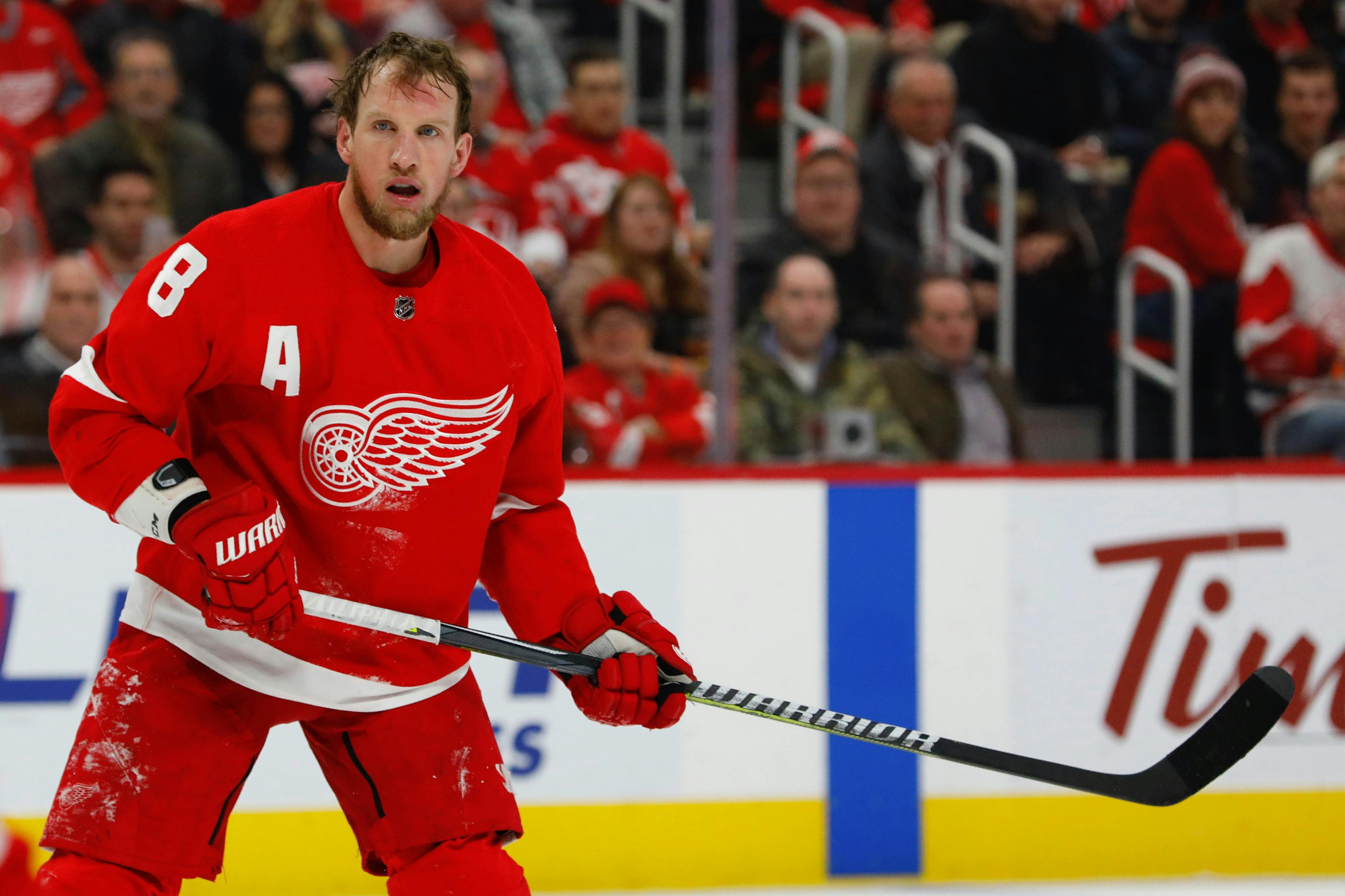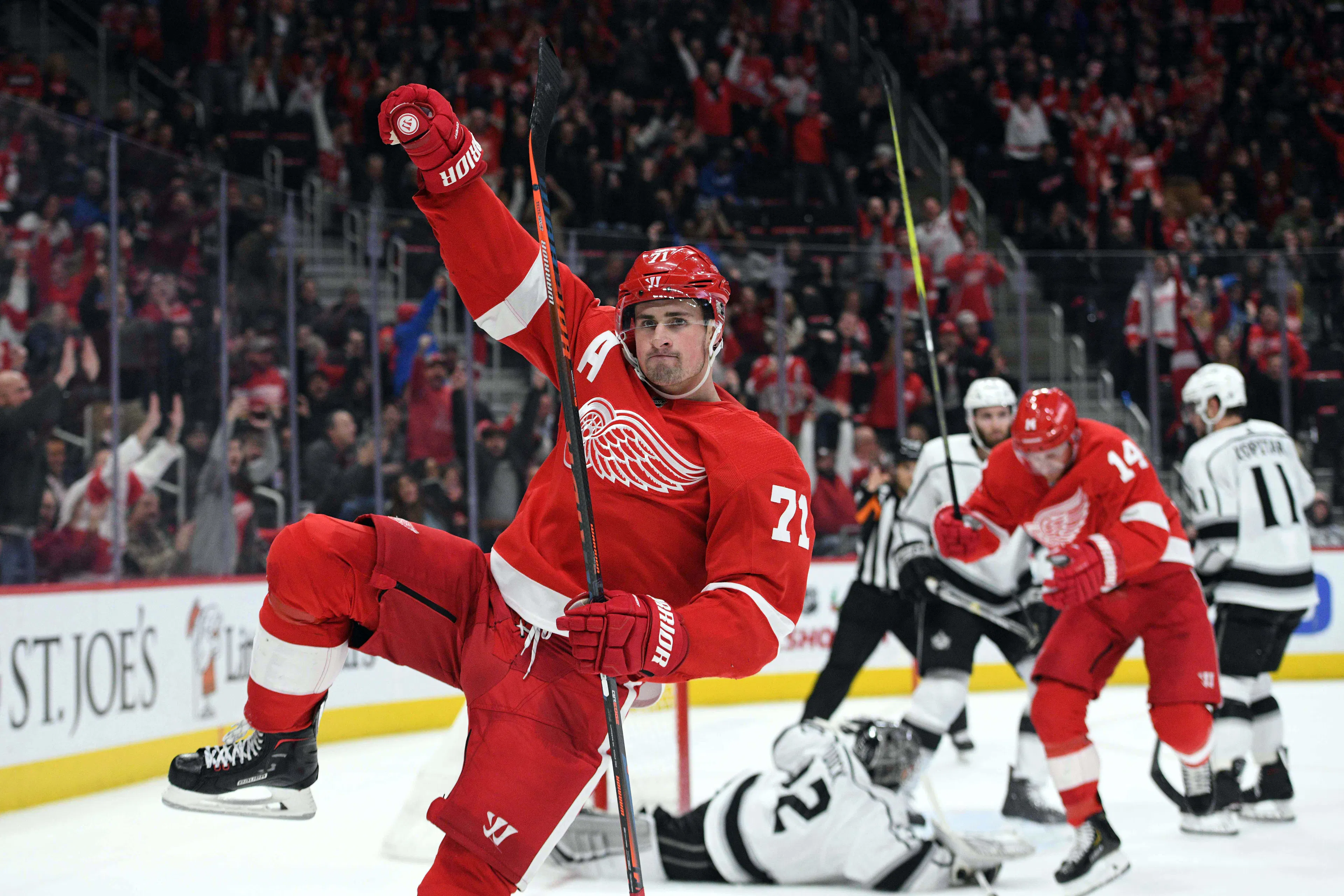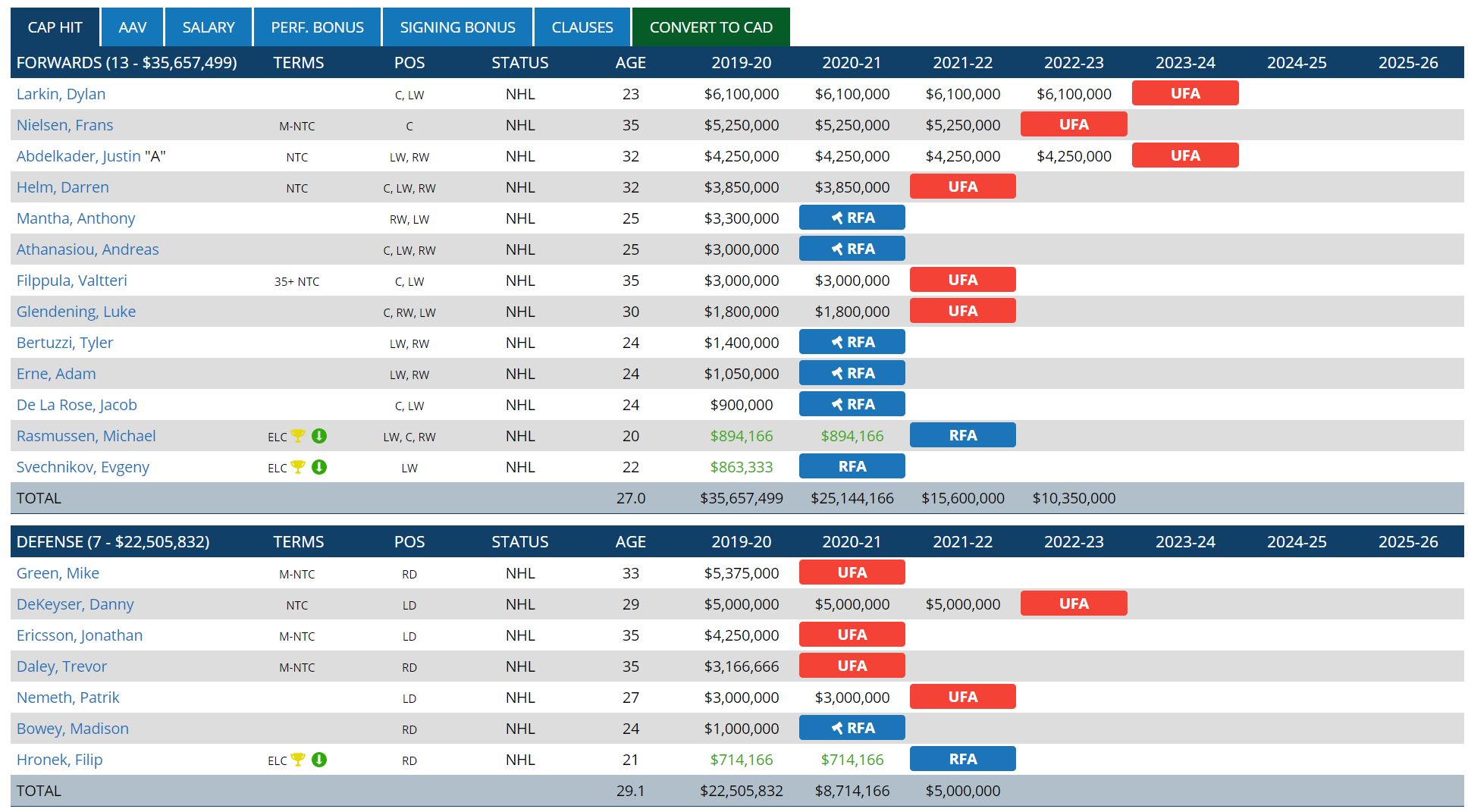From the Red Wings perspective: The good and bad of the NHL avoiding a lockout

By Cameron Kuom
4 years agoThe talk of the hockey world for the past 15 months has been centered around the potential lockout that would cost the league parts of or all of the 2020-21 season. Many had speculated a labor dispute between the NHL and NHLPA could be a reality, with the focus of the battle having to do with revenue shares and escrow rates.

But it turns out that was not the case. After the NHL chose to not opt out of the collective bargaining agreement, the NHLPA soon after announced their decision to do the same, leading to labor peace until 2022.
While both sides had their own separate worries about the current pact, this is great news for the league and the sport of hockey. A fourth lockout under Gary Bettman would have crushed all the momentum the league has gained over the last decade. The game has become increasingly more entertaining to watch from a fan perspective, thanks to the recent influx of ultra skilled, fast players. The introduction of three-on-three overtime has catered to the skill-sets of this new generation and has been a major success.
The surge in popularity has been evident by growing markets in Nashville, Raleigh, and Tampa Bay. Losing an extended period of the season could have been detrimental to the progress in growth the NHL has made.
From the lens of a team, the feeling of an avoided season cancellation can be described as mutual. After all, in any high-ranking situation, gaining a competitive advantage over the rest of the field can’t be overlooked. Through all of this, there is a silver lining that could have made a lost season digestible for some.
Both sides of the debate make this an awkward conversation for the Red Wings, who could have greatly benefited from some of the perks that come with a lockout. Likewise, it’s not all bad, obviously. From the thought process of someone who just genuinely loves hockey, how could this be a bad thing?
Well, I’m here to be the angel and devil resting upon your shoulder. Was labor peace really the best outcome from the Red Wings perspective? That is up for you to decide.
Pro: Not losing a season of Dylan Larkin’s prime
You can’t help but sympathize for Capitals fans, who were deprived of a full season of teenage phenom Alex Ovechkin in 2004-05. If the season actually did play out, maybe Ovechkin’s chase for 895 is a little more attainable.
In the case of Red Wings fans, they can actually empathize. Nicklas Lidstrom was at the height of his career in 2004-05, and very well could have won the Norris Trophy. No lockout, and all of sudden he is now tied with Bobby Orr for most Norris wins of all-time.
The mystery of “what could have been” impacts the legacy of so many other players. And before you ask, no, I’m not saying a lost season would have the same ramifications on Dylan Larkin’s career as it did on Ovechkin and Lidstrom’s, but it’s still less than ideal for a player of his prestige to go play overseas at the peak of his play.

Dylan Larkin has established himself as the Red Wings number one center. The Michigan product will be a core building block for years to come (Tim Fuller-USA TODAY Sports).
If the rebuilding efforts in Detroit continue to trend upwards, their competitive window should begin to open in 2021, and Larkin will be the engine that makes them go. He’ll be the team captain and undisputed face of the franchise by then. That includes the potential of the Wings hitting the jack pot in the lottery and landing a generational player in the draft — that’s how valuable Larkin is to the Red Wings.
So for their to be hockey in 2020-21, Detroit dodged the bullet of losing one of the peak years of Dylan Larkin’s career, seeing as he’ll be 24 years old by October 2020. Instead, the team can continue to move forward, and try to capitalize on the insane value of Larkin’s contract, which will have three years remaining at the start of the 2020 season.
Con: No compliance buyouts
The biggest saving grace to enduring a lockout would have been without question, compliance buyouts. Sigh.
What is a compliance buyout exactly? Well, it’s essentially the NHL granting a team the privilege to buyout a player without having the penalty go against the cap. The player would still be collecting two-thirds of their pay over twice the term, but from the hockey operations side of it, it’s almost like their contract never existed.
The NHL had a round of compliance buyouts in 2013 and 2014 after the 2012-13 lockout that allowed NHL teams to utilize this amnesty on one player from their roster, if they so chose to take action. The reasoning behind this exception is because, theoretically, no NHL hockey means revenue would go down, therefore the salary cap would go down. To combat the issue of teams basically feeling like they were screwed over, believing the cap would be much higher than its new projections suggested, the ability to have one compliance buyout was permitted.
With that in mind, take a glance at the Red Wings payroll and try not to cry.

Salary numbers via Cap Friendly
Sorry, sorry, I’m trying to delete it.
Those Justin Abdelkader and Frans Nielsen contracts are just staring you in the face. Compliance buyouts were Detroit’s only escape from those deals without any long-term implications. The only way out now is by way of regular buyout, that, or maybe some poor sucker falls for the Stevie Y charm. Stay tuned.
Now the caveat to this con is there was no guarantee of compliance buyouts being implemented, if a lockout was actually on the horizon. With the U.S. T.V. deal in a few years expected to spike the salary cap, maybe the NHL would have opted to bank on that as their excuse to agitated organizations. We’ll never know.
But either way, the Wings are still trapped in Ken Holland’s blunders. Good luck, Steve.
Pro: Proper prospect development
As we all know, there is no exact science to developing high-end prospects. Every prospect is different, and have specific obstacles to work around as they continue progressing into an NHLer one day. Some factors to consider, but not limited to:
- Are they in a favorable situation (playing on a good team, receiving quality ice time)
- Are they too good/too weak for the league they’re playing in
- What obstacles do they face (NHL-CHL agreement, EU players making the switch to smaller ice)
- Late bloomers
- Facing high expectations
The perfect example is Dennis Cholowski, who the Red Wings selected in the first round of the 2016 NHL draft. Cholowski did not have a linear path, switching from college hockey to the CHL after his D+1 year, followed by an up and down season between the NHL and AHL. Add in the enormous pressure he faced after being the (perceived) key piece to the Pavel Datysuk trade, and it was a whirlwind getting the Langley, B.C., native to this point.
But at the end of the day, it was all worth it, as it now appears the Wings have a solid puck-moving defensemen with top-4 potential in their system.
On to my point: having the option to develop NHL ready prospects in the NHL is a big deal. Cholowski doesn’t fit the description here, but that’s beside the point. Rushing prospects is a major red flag, but so is loitering them. A lockout would have interfered with proper development of NHL ready prospects, forcing teams to either send them back to play inferior competition elsewhere, or hinder them in the AHL.
We can’t fill in the blanks at this current moment in time, but consider the dilemma for the lucky team that wins the Alexis Lafreniere sweepstakes. A lockout in 2020-21 would have been quite the predicament, considering the argument can be made he is NHL ready right now. Crisis averted.
Wherever the pendulum had fallen in the NHL’s labor status, it was going to be a win-win for most teams — not so much for the fans. But maybe the NHL and NHLPA’s decision to make due with the current CBA was the best possible scenario for all parties involved. No one loses in this universe.
Then again, it would be foolish to deny just how valuable a compliance buyout would have been to a team like the Red Wings. As a die-heart fan, it feels wrong to admit I wouldn’t have been overly devastated to see the season cancelled, because like most, I just want what is best for the team long-term.
Nevertheless, the big pro of not losing a year of Larkin’s prime will be moot if the team is not competitive by the now confirmed 2020-21 season. If Detroit ends up in the basement once again — wasting another strong campaign from number 71 — what’s really the difference?
Recent articles from Cameron Kuom





